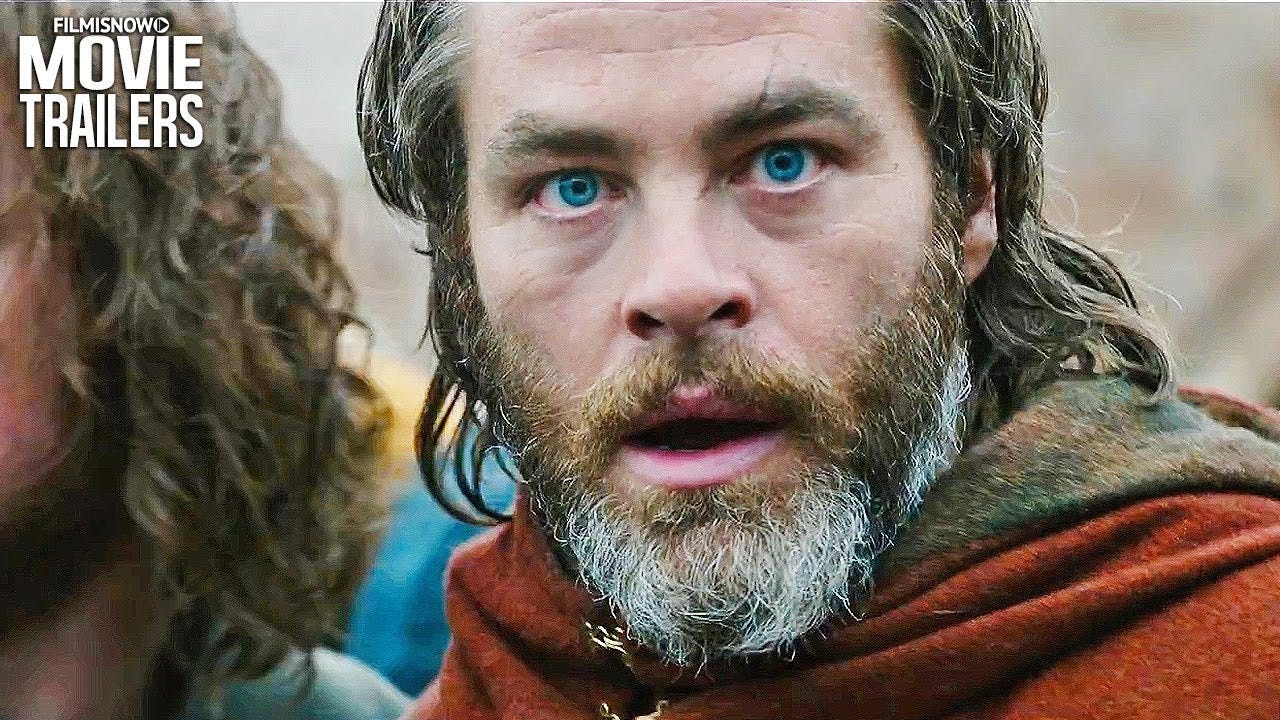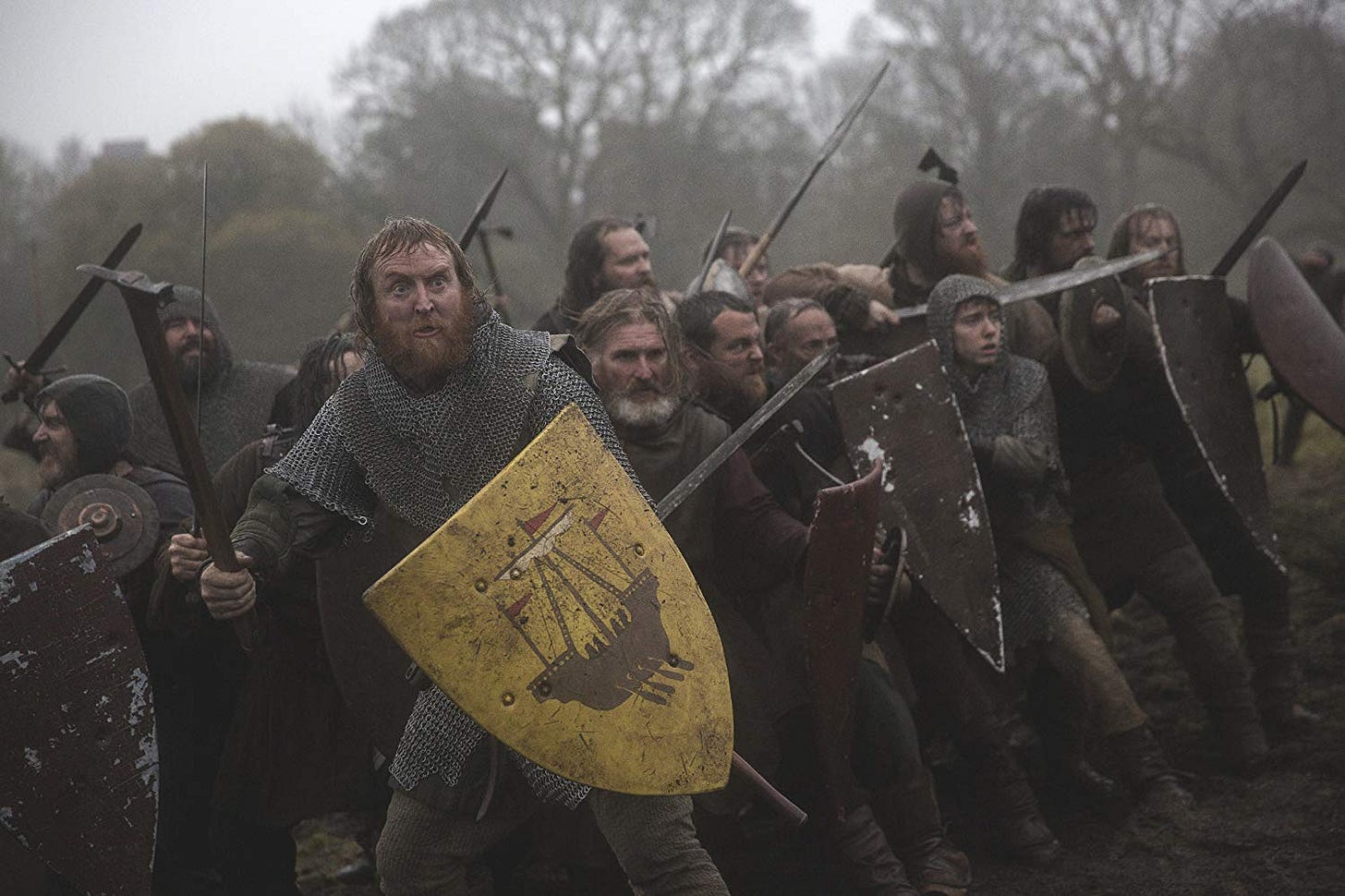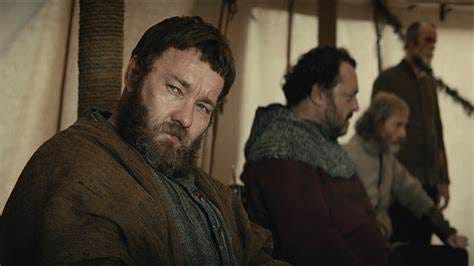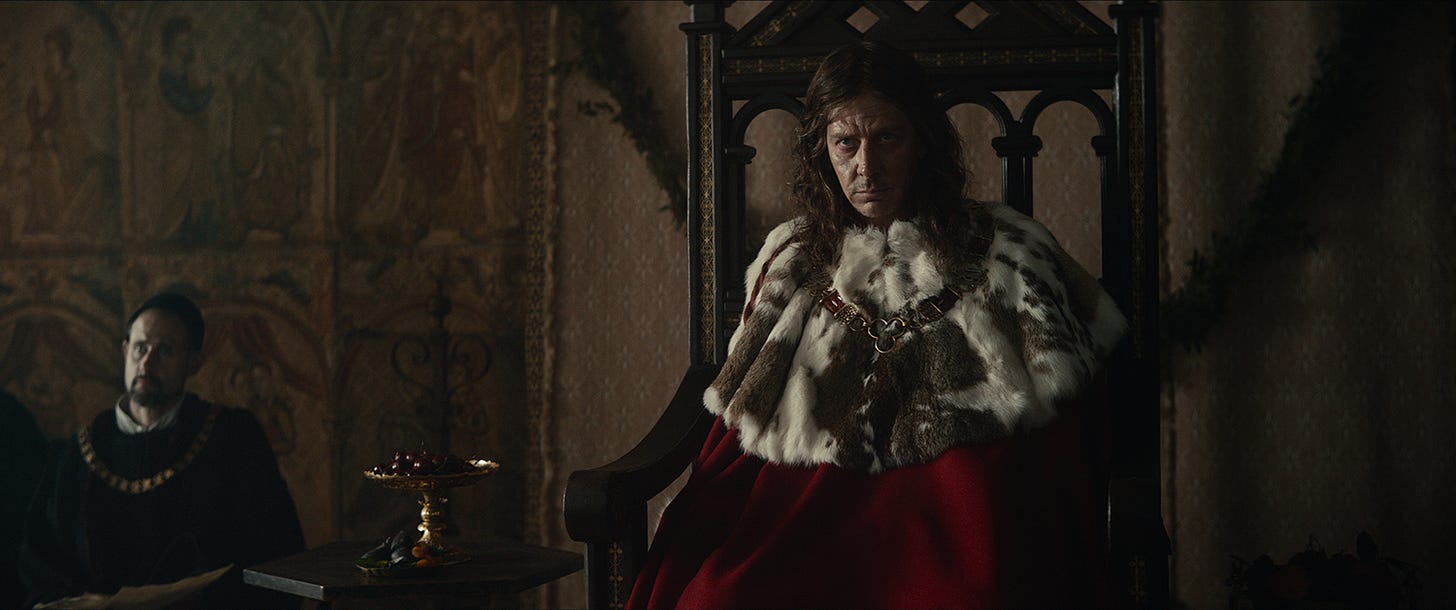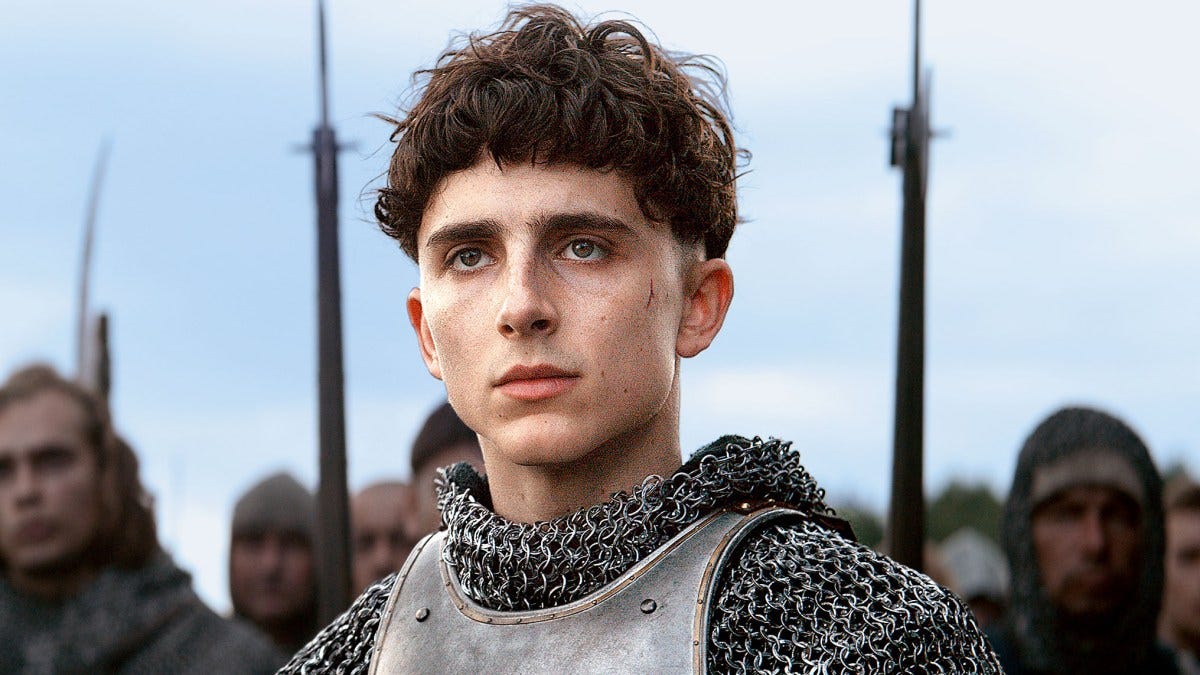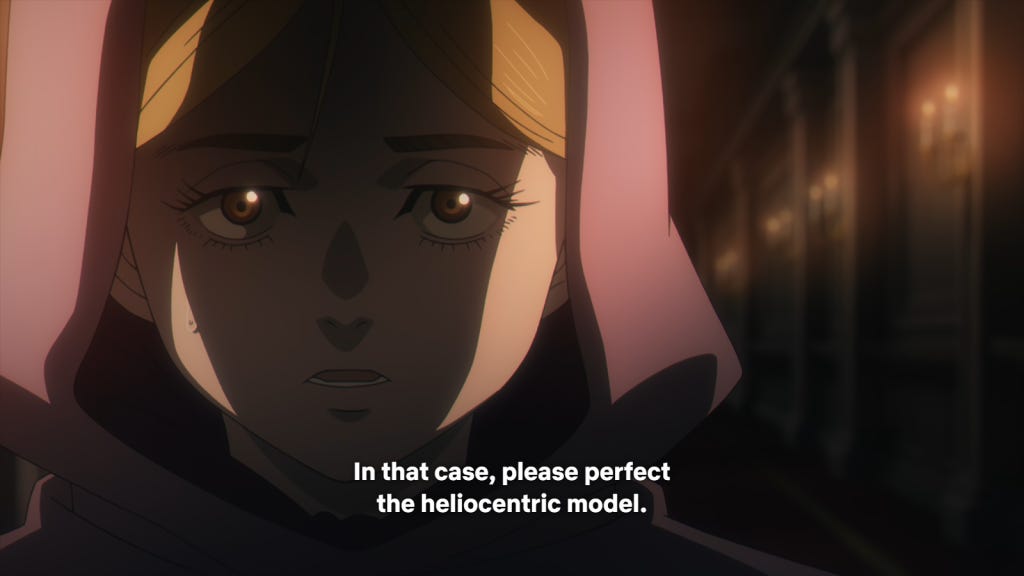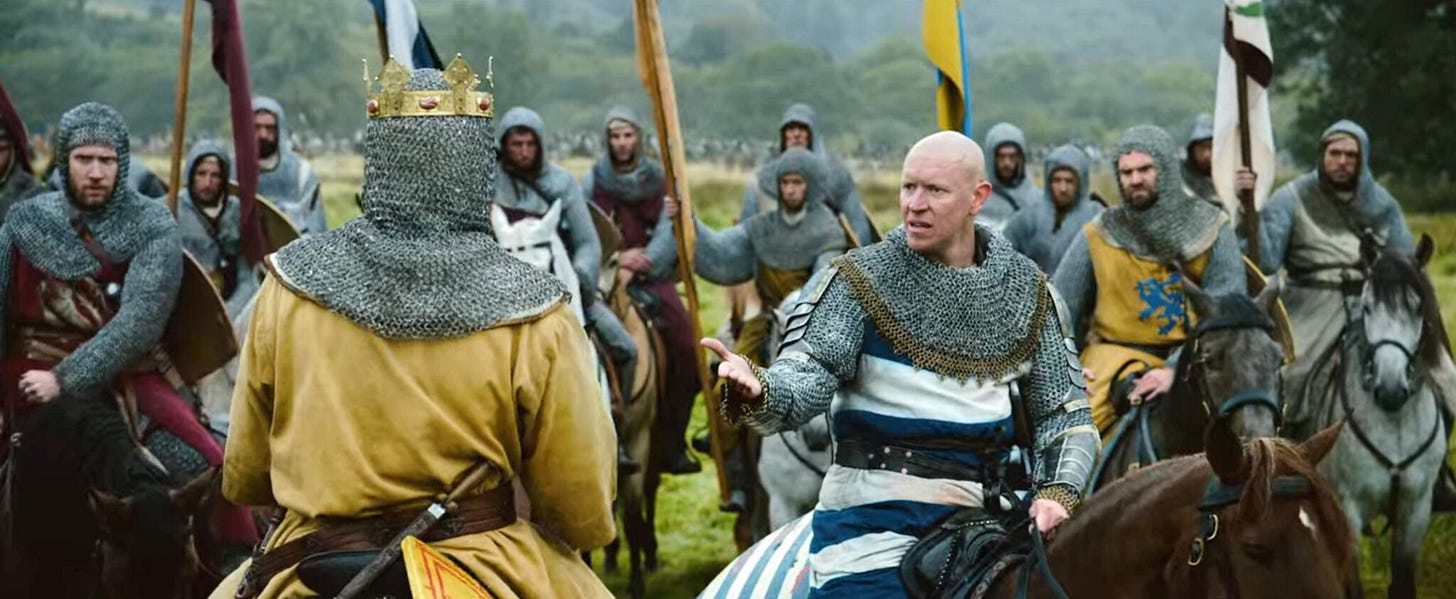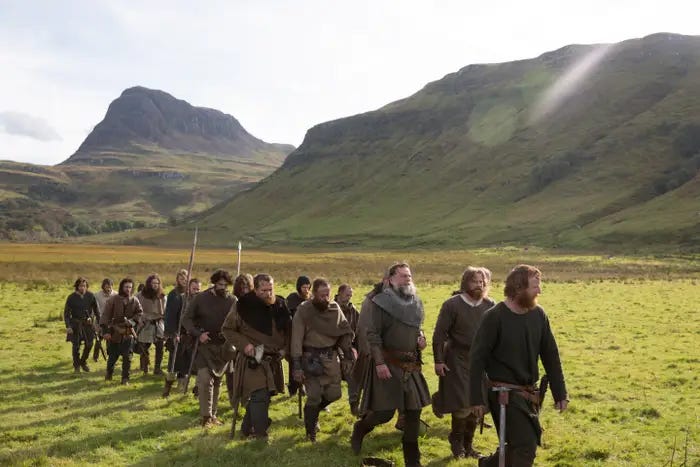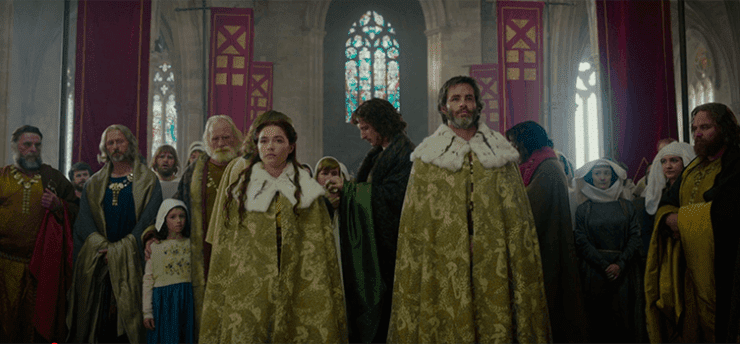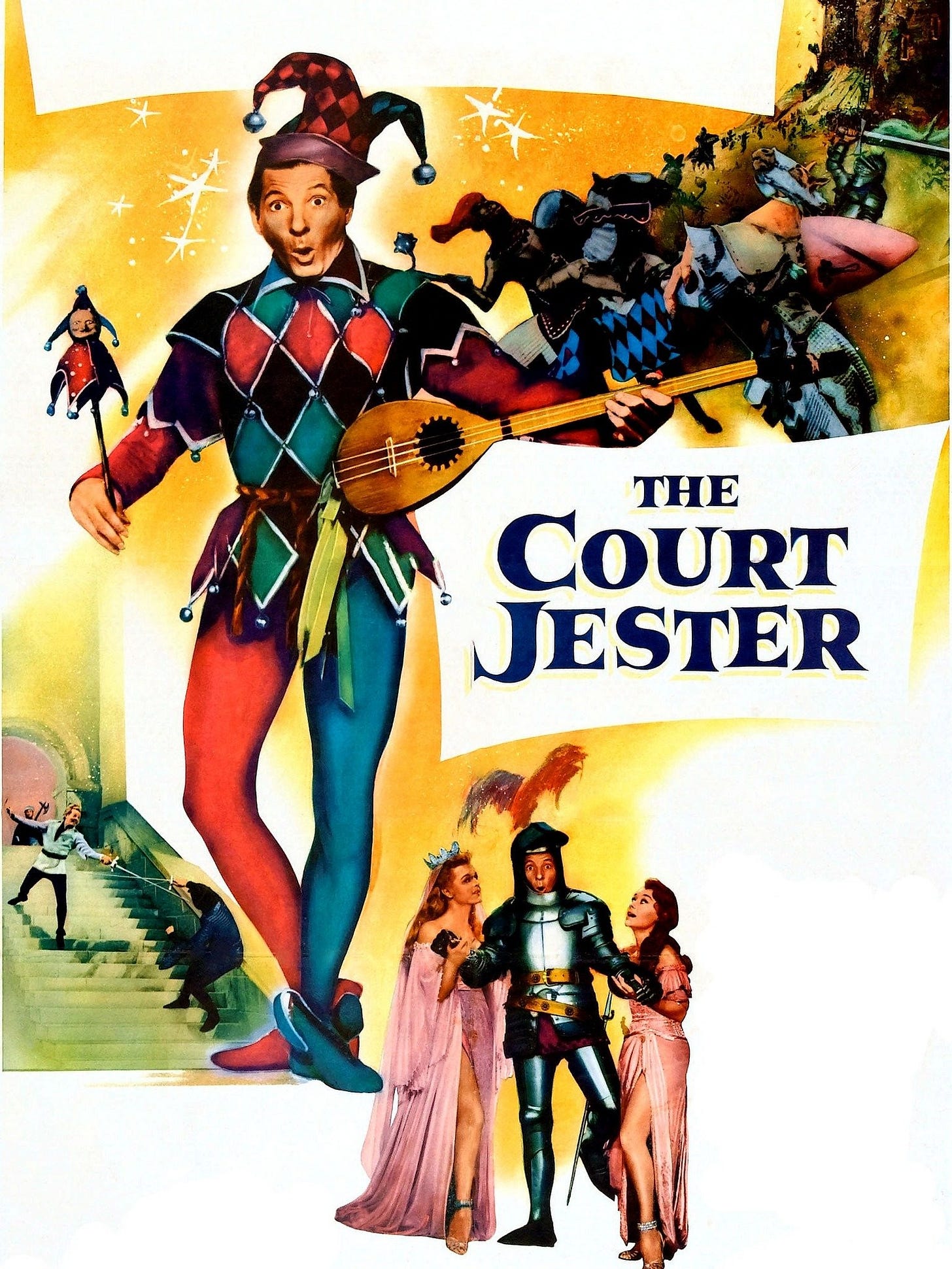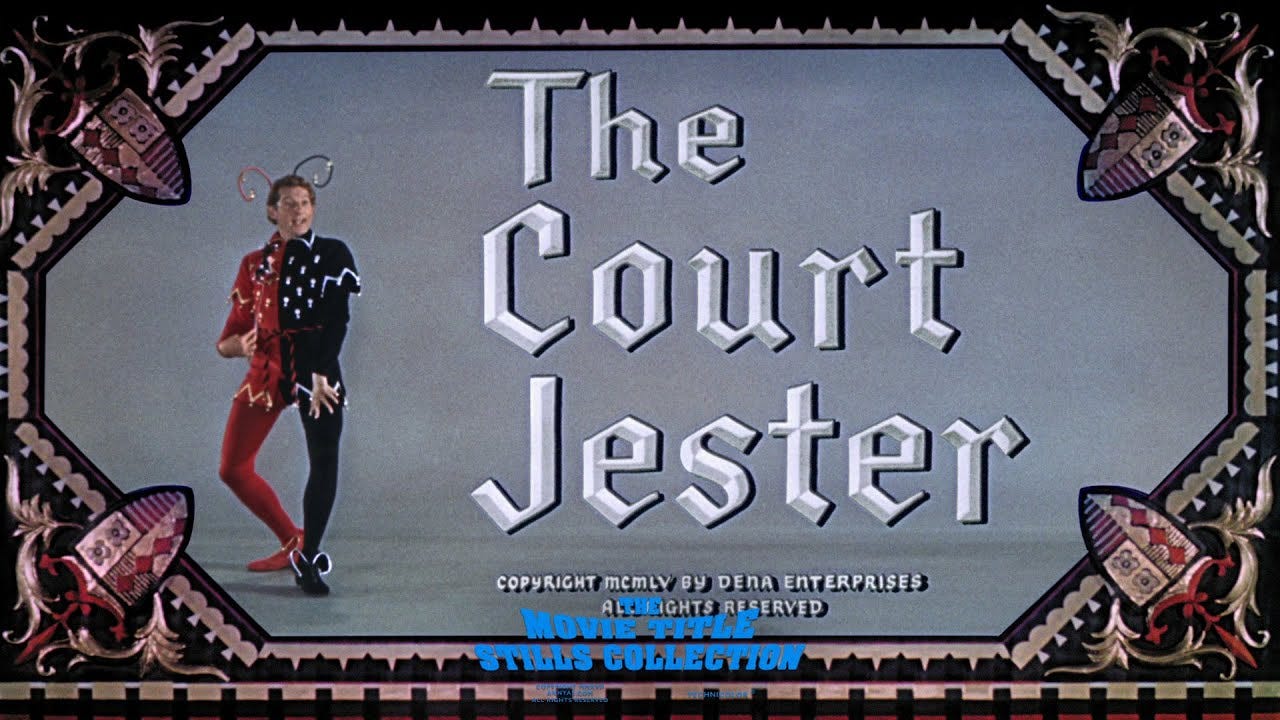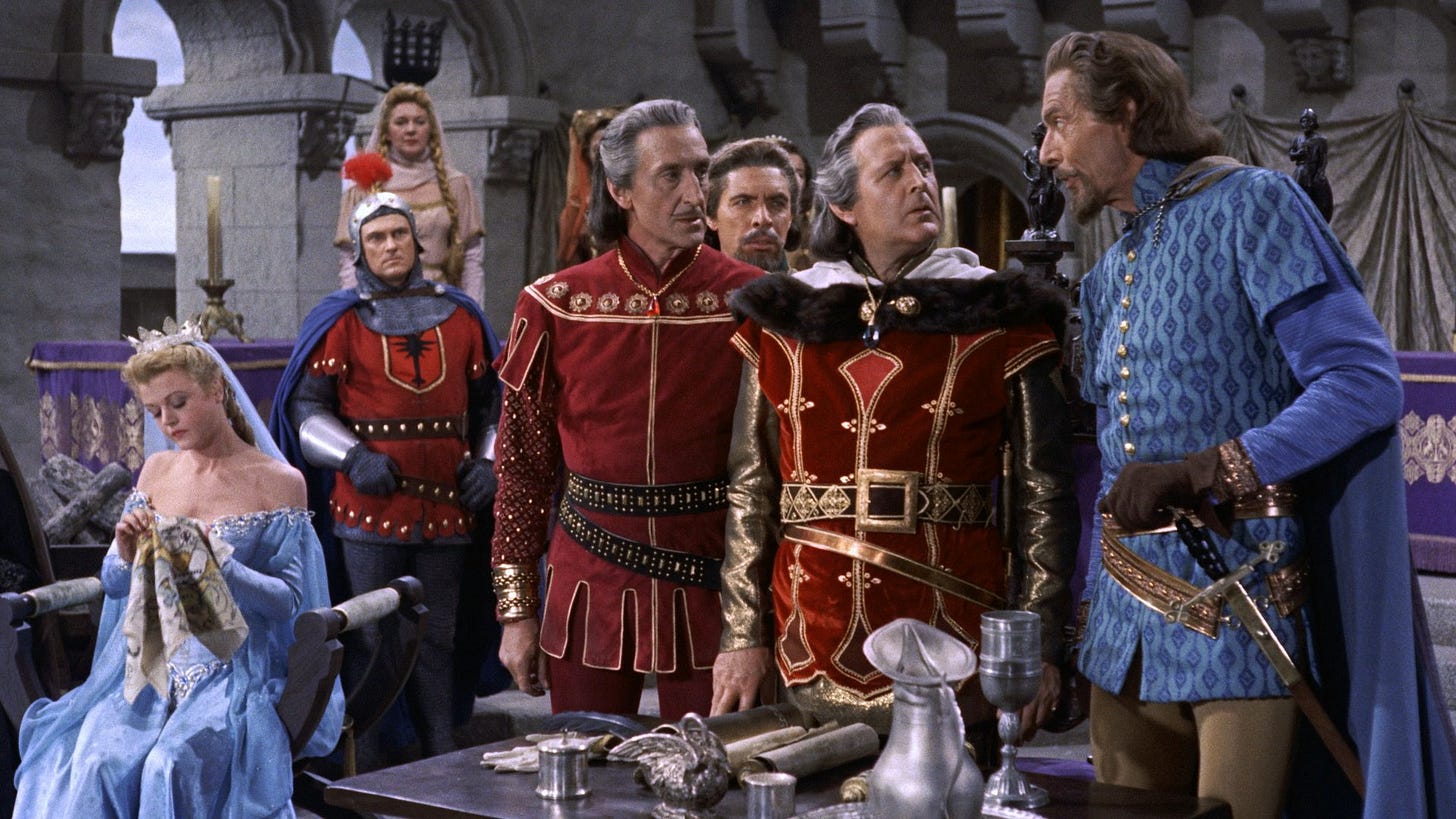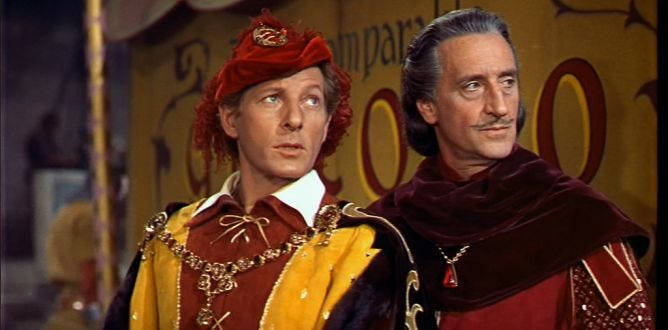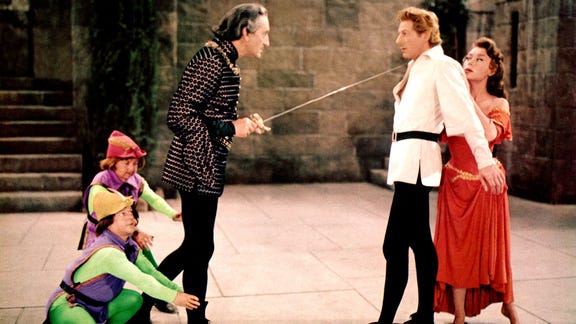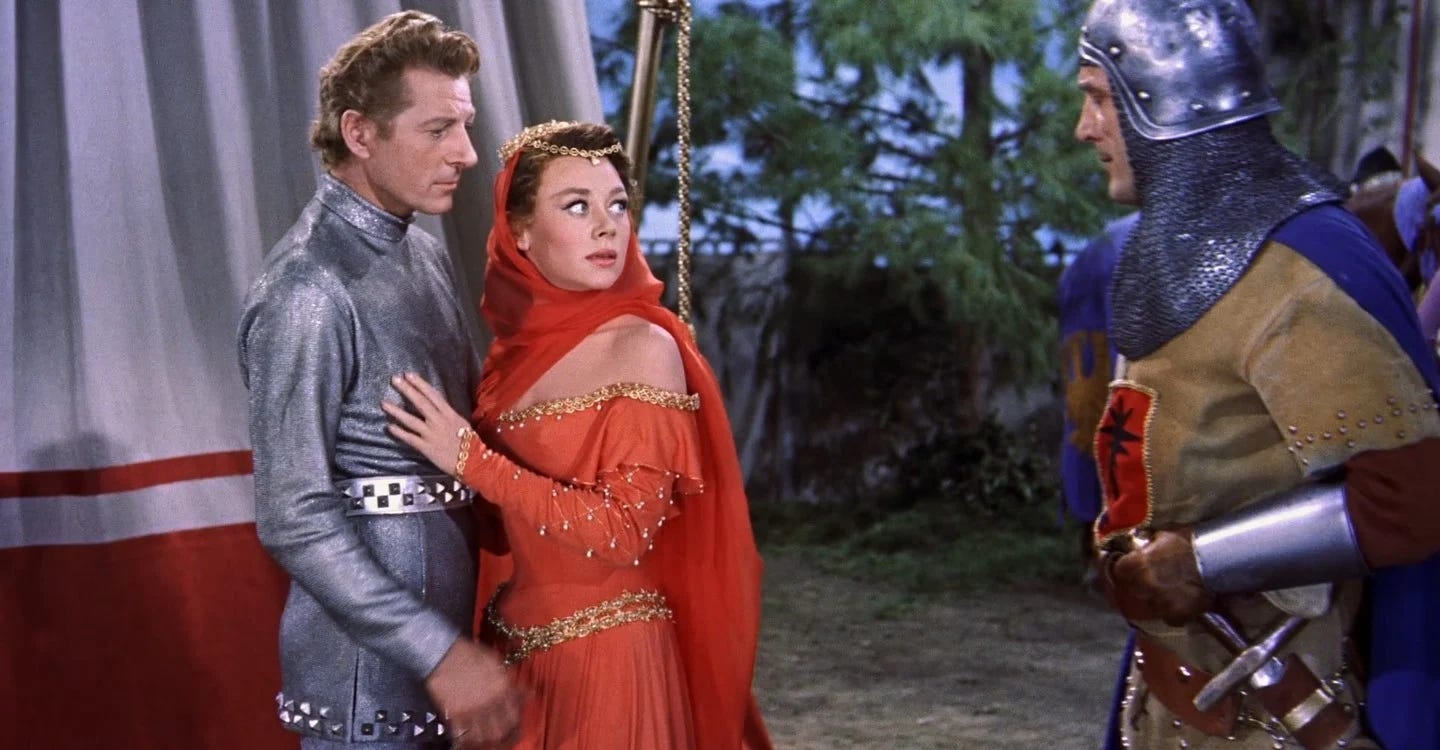The King! the King! the Outlaw King!
'The King' (2019), 'Outlaw King' (2018) & 'The Court Jester' (1955)
Timtothy Chamolets ‘The King’ and Chris Pines ‘The Outlaw King’. Are these both the same fucking movie? NO. At least, not quite. Yet I will review them as if they were.
One is an extremely dark and edgy Henry the 5th; about a boy who must become a King, and does, in about half an hour. The other is about Chris Pines beard and beautiful eyes as they try to become King of Scotland, on his face, while murdering everyone.
MUD
These are both definitely mud-based films. There's the scene with the big battle where heavy cavalry face outnumbered lighter troops across a muddy battlefield, and then it rains, and then the cavalry charge gets bogged down in the mud then the whole thing turns into a crushing brawl with men battering each other, CGI horses getting brutalled and fine heraldry drowning in muck - that one is in both films.
Ethnofantasies
These are strangely pro-ethno movies and both are in conversation with previous fictions. 'Outlaw King' being super pro-Scottish is less of a surprise as that’s one of the normative, allowed, ethnogroups you are allowed to valorise, but it’s very clearly almost a paired film with 'Braveheart', to which it is a more discerning, more intelligent, but much less interesting and capable 'older brother'. Braveheart is kinda trash but is a great movie and 'Outlaw King' is quite posh, or at least bourgeoise, but is genuinely quite boring for lots of it.
'The King' is a bit mindbreaking as its an outright pro-Anglo movie and I didn't think they even existed any more. The last I can think of is the odd run of Churchill movies. But 'The King' is outright a 'version' not of history, but of Shakespeare’s history plays. Darker and edgier, with more grey and less talking, and cool battle scenes. This has a sad alienating bit at the end to prove it is a bourgeoise story & not common.
Nations!
Both 'The King' and 'Outlaw King' are from a time when ideas of nation were nascent growths on ancient strands medieval descent-based identity; of tribe, house, clan and kin. They are being re-told (first by Shakespeare, in a more 'English' culture), and then again in these films, in a world where 'nation' matters more than 'house' for most.
They are stories about the birth of nationhood and to some extent, are likely illusions. But to what extent? One good, True thing about 'The King' from which maybe 'Outlaw King' looks aside; in its extremely dark and moody ending, Chimmy has it out with Sean Harris, the subtle advisor who intrigued behind his back to engineer his war with France; Harris gestures to the crowd cheering outside the window – “this is what peace is made of”. He gave them a war, victory, and deepened selfhood. An identity. This too is what nations are made of. For every Self there must be an Other. (Not yours of course my simple decent reader, your sense of selfhood would never require an abominable Other to sustain it.)
Unlikely Actions
Both Chimmy and Pine are protagonists strongly tilted towards a 21st century perception of 'good' yet, being trying-historical and honestly-pseudo-historical, neither can avoid their protagonists doing a lot of shit that is impulsive, nutty and horrifically violent. The contrast would be less painful in a more 'Hollywood' movie. 'Braveheart' lived in a heightened dream, so his bananas actions didn't feel as out of place, both Henry V and Robert Bruce are stone cold ambush predators, but also of course very deep and soulful sacred monarchs who feel very sad about things and are 'for the people'.
For the People
It’s hard to say that any medieval war could easily be 'for the people', raiding and destruction are the main means of feeding armies. And, even though it utterly beggars them with taxes, I think medieval populations were often active war-supporters; they want the biggest strongest king who smashes the most guys and fighting is something kings are meant to do, a good thing. Its King Time, even the people are not 'for the people' most of the time.
Grave Sad Killers
Not heightened, young, slightly fanatical murderers but very sad and grave murderers - sadness and gravity being the primary emotionality that digests ancient behaviour for a modern eye. But as Hugh Cook memorably pointed out; most successful soldiers are amnesiacs and the winners absolutely think they were right. They are not sad victims.
The princes of the middle ages, young, drunk, nobles, from an honour culture we can't intuitively grasp, subtle and intelligent, impulsive and murderey in a way hard to fathom now. Sole dictators, surrounded by potential foes. If they terrorise everyone around them into quiescence, people will say they are a Tyrant, and try to kill them. If they are nice and try to persuade everyone to please not kill them, the same people will say they are weak, and try to kill them. They probably do not feel that sad and grave about murdering people if they think it necessary. Do a penance.
Chris Pine kills a man in a church during what was meant to be a negotiation. The church forgives him, but more importantly, the film does. In the films eyes, he really didn't have a choice. It was a sad but necessary act. But was it? Maybe it was a nutty, impulsive or even fun act for the real Robert Bruce. In 'The King', Henry does a war, wins an utterly brutal battle, watches his noble princely foe get cut to bits by commoners, also cuts the heads off some guys, some of whom might have been proto-traitors, and stabs one of his own advisors in the neck. He certainly looks very sad and grave about these tragic deeds, but would a Prince of the Blood actually feel sad, or grave? In-world these are not really tragic events, as we would perceive them, but simply the necessary, and even good, actions of a ruthless and righteous power. Just do a penance bro.
AWARDS
These are also both very much 'Awards-Please' movies. The King has soft and growly chim- chams speaking VERY SOFTLY AND INTENSELY. He has added more tricks to his bag since this, but this is very much an early 'serious movie' movie. Pine Tree is also extremely sad and grave about everything and clearly suffering hugely to be THE KING. He even wears his coiffe/helm in the battle scene, (which Heroes NEVER DO), to prove this is serious business. Piney is also very softly intense and widowed-father poetic about the various terrible things he is up to. Awards!
Not Enough Religion
I forgot to talk about religion and that everyone is a (probably, broadly), sincere Christian and also doing some very non-Christian things. I do like in historical shows and films where the characters will go off on one about some, to-us obscure, religious or moral point, but to them, vital and immediate matter and be really into it - because everyone is raised religious in a raised-religious world, that is also quite a savage world - the imminence of god in a reality of sin. Probably figures in historical fiction largely do not talk or think about god enough! 'Orb - On the Movements of the Earth' despite being Japanese you get a pass on this one!
ARE THESE FILMS REALLY GREY? – a semi-defence of ‘Medieval Griselle’
A thought that came back to me throughout 'The King' and 'Outlaw King' is the relatively muted naturalistic cinematography, what I call 'Medieval Griselle' - something very common to modern medieval films and a common enough thing to note in reviewing them.
We know medieval people loved colour and that the more important you were, the more colours you got, and the richer and more vibrant they were.
We know the modern 'Medieval Griselle' has trouble with this. Both King Films are very concerned with various kinds of accuracy, and both are quite discomforted with the amount and kinds of colour this might require on their screens. They deal with this by carefully highlighting and muting colour sometimes, bright blazons are dinged up and heraldic tabards washed twenty times before use. The rich burgundy of bishops becomes almost more a texture than a colour.
Why do we do this?
High level emotional synthesis reason
It may be that the emotional mood of the middle ages is just somewhat impenetrable to a normative modern audience, it combines too kinds of emotion and sensation, too closely (see similar muting of 'heroic' personalities in action and decision). Lots of mediaeval-style movies have like a ritual butchery scene near the beginning, like a pig or chicken being slaughtered in the street or near it, (we usually cut away), lots of mud, some finery. Yes blood, mud, gold and velvet, but only for a scene or two, to let you know, 'Hey, it’s the middle ages'. If this is carried on for the whole film we get something more like Verhovens 'Flesh and Blood'; a gaudy, grotesque, dirty-gold, wild & winey, slightly hypnogogic and intense story, of intense, almost childish, swings of emotion and display. Maybe that’s just hard to take for lots of films. Maybe Verhoven being a shameless pervert, simply understands the middle ages better than we can.
Simple Practical Reasons
Northern Europe is grey, and strong counterposed colours don't look good under grey light. In the wonderous Technicolour films of the 40s and 50s, the costumes are under bright buttery gold Californian sunlight, and also under bunch of lamps, they are also contained with a 'studio world' where it’s easier to make EVERYTHING very bright and colourful. With modern cameras and techniques, these very bright individuals keep going into dark interior spaces or grey natural outside spaces where, presumably to a modern cinematographer and a modern audience, they look and feel out of place. it just looks bad, is what it is, and maybe it even looked bad at the time but no-one cared.
The eye is not a camera, nor the mind a stage. Big has feel differently in real life than on an envelope-shaped screen, and different again when everyone is wearing them. Bright blazons and bright flags surely help in a real battlefield, no matter how muddy it is. King-Bling pops in real-life shadows in ways it might not in a scene.
Back to what may have been my original point - I see, and describe, these films as 'grey', but that’s not the whole truth - their strong colours are muted, but there are things this aesthetic does well, and though I may cope and seethe about it now, when it is dominant, I might equally miss it once it is gone. What are some good things about Medieval Griselle?
Natural Tones
Blessed Edward Munsell would approve these films - NATURE! HEARD OF IT YOU SICKOES? SEASONS? WATER? Water looks pretty cool once you actually look at it you know. Drink that shit in literally. In particular, Outlaw King, shot on what I imagine to be GIGANTIC CYCLOPS EYE cameras, is a visually gorgeous film, an absolute glaze job on the Scottish scenery and another brave attempt to actually fill the FUUUUU--CCKK-IIINNG--WII-DDDE Cinemascope aspect ratio. Something 'Outlaw King' does somewhat better than 'The King'; it reliably has long lines of guys marching or doing whatever, leading off like snakes into the wavy distance and across the screen. It also has MASSIVE SCOTLAND to look at which is nicely screen-filling.
'The King' submits a little more to box-in-scope directing where the huge wings of the screen exist but pretty much everything important is happening in a little TV sized box in the middle. But hear me out - Cinemascope is actually not a good format for most films. It has high status because when it works really well, it works REALLY well, and carries the deep epic feel. But, pretty much all the REALLY GOOD cinemascope movies that won it that reputation are set in deserts. 90% of movies shouldn't be in this format. There is nothing there to really see. (Unless it’s literally nothing, carefully arranged like a Japanese meditation garden – David Lean dragging a single Brick across the desert to create just the right tonality of zero for a shot.)
TEXTURE
you want to feel the GRAIN on that buddy? Want to run your fingers over that table, feel just how it was made, that sword, those clothes? This is a world of grain and weave, of textures, heavy things you feel, of weight and skin, instead of just the eye. WEIGHT - almost the opposite of swashbuckling, everything in these films feels heavy and strong, things thud, men fall, this isn't really about cinematography, unless it is somehow? The weight and solidity of everything certainly synergises neatly with the texture, tones, naturalism...
Both King Pics have wonderful pseudo-natural modern digital matte-paintings of medieval towns and castles.
Three stars for both
Maybe two, but so much true and earnest work and actual skill went into both these films that I can't quite face taking that third star away.
But, did you realise there were actually utterly other, and in fact, quite Opposite, ways of looking at the Medieval world? Yes, activate your ‘Merrie Engerland’ filters, get ready for TECHNICOLOUR. The pellet with the poisons in the chalice from the palace, the flagon with the dragon holds the brew that is… wait, what about the vessel with the pestle.. hold on…
The Court Jester
An utterly lovely film. Maybe the kindest and sweetest film I have recently seen. a very loving mid 50's parody of the pseudo-medieval rambunctious Technicolor extravaganzas of the 40s, especially the Errol Flynn Robin Hood. Those were already quite heightened, glorious, theatrical 'presented' forms, and this is a parody of those, so it’s like a liquor twice refined. Its vapour, nearly, then it burns.
The Joy of Danny Kaye
The living presence of Danny Kaye seems to impregnate every centimetre of the screen. It’s a film made literally _for_ him, as a jewel box for his for his complex manifold talents, but his personality and preferences, less directly but more deeply, fill the image with joy, ridiculousness and a love of humanity and life.
The film begins, with Kay, in costume, half in character, singing to us, like a muse, of the meta-nature of his film - like the prologue of a renaissance play, he tells us how it came to be and reassures us that, while some parts may be scary, everything will end well. While he is doing this he 'plays' with the opening credits; pulling and pushing them offscreen to the timing of his song, and getting into a repeated fight with the credit for Basil Rathbone, which, because he plays the villain, keep trying to muscle their way onscreen, while Kay dodges and bats the huge words 'BASIL RATHBONE' away.
Of the complexity and difficulty, of this, more later, but for now let it be said that Kay has killed deliberately, any sense of deep peril in the film - this is a story that he has *DIRECTLY SAID* will turn out well. So, what is left for us to watch?
(The film does have mild tensions within itself; threats and trouble, despite Kaye formerly disavowing them, you cannot simply remove these from a simulated reality and Kayes reason for doing this might simply be for the joy of it, a dislike of threat as a tool in drama, a pleasurable callback to renaissance theatre, or any other reason, but the fact that he did it at all, means he announces his story as 'purely play', it is a kind of pleasurable game where we watch not to find out what will happen ("all will be well") but to take pleasure in how it happens.
The deathless prince.
Danny Kaye is such a vector for ridiculous Apollonian/Dionysian energy that it feels like people _literally cannot die_ while he is present. He is like a Summer King who makes everything a cartoon. His head is never explicitly cut off and re-attached but he does have a scene where his knight-helm is bashed off and then his face raises out of the armour like a cartoon.
In the films denouement, midgets invade the castle, knock out the guards with displays of acrobatics and shuffle them, like cartoon mice, to a catapult, where they are simply fired into the sea. This is also what ends up happening to Basil Rathbone in the end. I lost track of what happened to King Roderick but I don't think we see him die.
Yet...
A man is tortured to death in this film. It happens offscreen and I only just, and for the first time, noticed it, as part of the conversation between the villains - before I had never realised at all that people could die in this story.
The 'over story' for the film, while theatrically presented, is very dark. A 'false king' has murdered the entire Royal Family and taken over the country. One 'true heir' remains, kept in the forest by outlaws and the current King is earnestly hunting for this baby so he can murder him. Not only that, but the basket with the baby in it ends up in the Kings court and the jiggery pokery involved in keeping him away from it is a major part of the farce. During the story, the secret agent of the bandits in the castle, the Ostler, is arrested by Basil Rathbone, then taken offscreen. Later we hear about his torture, confession and death. This is the statement I barely noticed in every previous viewing. (Wait! I even remembered another one, three men are poisoned by a witch and die in front of us, and in front of Danny Kaye!). The story-bones are dark.
Why does it not feel dark? And in fact why had I forgotten even about the death of the three lords until now?
Arch Sincerity - the honest lie.
There is the world of full we-are-not-performing pseudo-naturalism, and far away from that the we-are-barely-performing slacker comedy, and the we-mock-our-own-performance of the Lethal Gun movies. The Court Jester takes place in a reality where everyone is performing archly, with great sincerity. If what we see when we see a performance is a combination of the-role-itself and how-the-actor-holds-the-role, then these roles are, like the costumes, bright, symbolic, vivid, perhaps shallow, but the way in which they are held is very joyous; the actors are fully involved with their performances as performances if that makes sense, and are very sincere about presenting these characters. We have already been told upfront that this is a 'performed story' so the pleasure we take is not only in the story but also somehow living alongside with the actors as they perform it.
Colour and Costume.
while the Kingling movies, (I watched this in-between the mediaeval grisaille movies 'Outlaw King' and 'The King'), had *some* aspects of medieval realism, (men dying in mud, things being grim), simply through its falsity, and its extra-ordinary brightness 'The Court Jester' manages to present medieval *fashions* in a very hyper way, the courts look like explosions in a tarot card factory - everyone looks fucking MAGNIFICENT, and most of it is lore-accurate I think.
(Only back-stagers and deliberately non-charismatic characters are forced to deal with actually-medieval haircuts, all the cool front of stage people have lovely, effervescent, almost cloudlike 1950s hair, a period piece in itself. (Where is the forgotten blog no one reads all about 'haircuts in film'?))
This is such a bright and magnificent film, everyone is utterly vibrant all of the time and aesthetically it _works_ because the environment is butter-gold, the sun is always out, the night is pale blue rather than black, villains wear magnificent purple, (Basil Rathbone may never have been dressed better), the Court people all change clothes multiple times over the story. A tale from an eternal Californian summer.
So much happening.
There are points in this film where Danny Kaye is playing maybe three or four characters contiguously, I mean layered upon one another. First he's Danny Kaye (actually David Daniel Kaminsky but lets not get into that), playing the minstrel Hubert Hawkins, then Hubert Hawkins has to pretend to be Giacamo, King of Jesters (and Jester to Kings), then its revealed that Giacomo is secretly an assassin hired by Lord Ravenhurst, so Hubert Hawkins has to play Giacomo/Assassin a bit, then Giacamo, (Hawkins), is hypnotised by Griselda into being 'the perfect lover' to woo princess Gwendolyn, and after that, hypnotised again into being 'the greatest swordsman' to fight Lord Ravenhurst (each of these hypnotic effects can be switched on or off in an instant with a finger snap, which happens multiple times throughout these scenes).
Layers of characters, layers of deception, layers of plots, Everyone gets a scheme, and sometimes multiple schemes. Layers of jokes. The now-famous tongue twister scene, which really is an emblem for the movie, is mixed with the 'accidentally magnetised armour' scene, which turns into the joust-with-magnetised armour scene.
Hawkings sword-fighting Lord Ravenhurst at the end is mixed up with his super-swordfighter hypnotic persona being turned on and off randomly making him alternately, an Errol Flynn level super-athlete, and then a Danny Kaye level physical clown, and he's inter-layering both of these extraordinarily difficult things in-one.
I want to re-watch the extended battle between Rathbone and Kaye in a square room, done with one shot, (only part of an extended fight sequence) as I can't tell if its madness and genius - Kaye seems to howl madly around the room, waving and whacking his sword so chaotically that Rathbone is afraid to strike as he genuinely isn't sure what Kaye might do - I want some Youtuber to do a frame by frame of this please.
A film impregnated with distant death, overseen by a deathless prince, brighter than the face of summer if someone hit it with a gold brick, more colourful than seven rainbows, more complicated than a Rube Goldberg repair manual translated by an LLM. It looks like nothing but a toybox. This film bombed on release! The fucking audience let me down again! Fuckers! Five stars!





